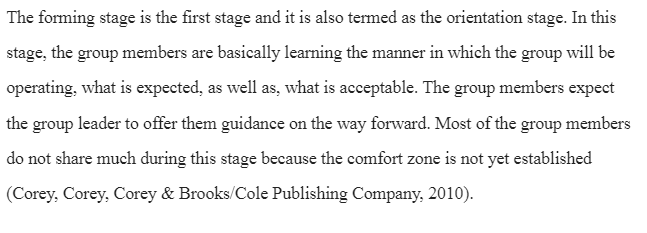The Forming Stage of Group Therapy
A simple way to remember the stages of group therapy is as follows: form, storm, norm, perform, and adjourn. For its members, a therapy group begins with the group’s first gathering (form). Early meetings are frequently accompanied by some level of conflict (storm) as members learn to work together and establish the “rules” of the group. As members become more comfortable with the process (norm), their ability to work toward a common goal improves (perform). This is when the bulk of the therapy group’s productivity occurs. Finally, when the desired results have been achieved, the group terminates (adjourn). There are more scientific names associated with these stages, and there can be sub-stages, as well, but the underlying concepts of progression and change over time remain the same.
Effective therapy group leaders should be aware of what clients may be feeling during particular stages of group therapy and know techniques to help the group members move throughout the various stages. In addition, therapy group leaders need to be aware of group dynamics, including recognizing how therapy groups get stuck, as well as why and how to help groups move through barriers. At times a group leader might let the group work through its own problems, but, at other times, the leader needs to be proactive and take control of the therapy group.
For this Discussion, select one of the stages of group therapy. Consider the key characteristics of the stage you selected and how you might identify that stage during the therapy process. Also, think about the steps you might take to smoothly transition therapy group members to the next stage.
With these thoughts in mind:
WRITE a brief description of the stage you selected. Then, explain how you might recognize this stage in the therapy process (e.g., what you would do or say during this stage, what therapy group members would do and say during this stage). As the group therapy leader, explain what you might do in order to transition the group to the next stage. Provide examples to support your response.
**STAY ON TOPIC**
Answer Preview-The Forming Stage of Group Therapy

